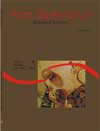<b>Obtaining 5S rDNA molecular markers for native and invasive <em>Cichla</em> populations (Perciformes – Cichlidae), in Brazil</b> - DOI: 10.4025/actascibiolsci.v30i1.1467
Resumo
O gene DNAr 5S é informativo e possui altas taxas de conservação ao longo do genoma dos eucariotos, possuindo características únicas que são hereditárias. Estudos moleculares do gene DNAr 5S vem sendo realizados com diversos grupos, inclusive em algumas espécies de peixes, com o intuito de solucionar problemas de relações filogenéticas, padrão de ancestralidade e diversidade genética, entre grupos de populações naturais. Espécies do gênero Cichla, introduzidas na bacia do alto rio Paraná, apresentam polimorfismos genéticos, detectados por análise de RAPD e SPAR. Essas espécies estão intercruzando-se e formando híbridos viáveis, com maior variabilidade genética. O objetivo desse trabalho foi padronizar a metodologia de amplificação de regiões não-transcritas da família multigênica rDNA 5S de Cichla e obter marcadores específicos para as espécies parentais que pudessem, também, ser identificados nos híbridos. Foram analisados 65 espécimes de Cichla, das bacias do alto rio Paraná e Amazônica. Apesar de não se obter marcadores moleculares que pudessem ser úteis à identificação de híbridos, foram obtidos marcadores moleculares genéticos DNAr 5S espécie-específicos para Cichla temensis, que podem ser utilizados para identificação de exemplares dessa espécie e, também, marcadores populacionais, que podem ser úteis para estudos de variabilidade genética populacionalDownloads
DECLARAÇÃO DE ORIGINALIDADE E DIREITOS AUTORAIS
Declaro que o presente artigo é original, não tendo sido submetido à publicação em qualquer outro periódico nacional ou internacional, quer seja em parte ou em sua totalidade.
Os direitos autorais pertencem exclusivamente aos autores. Os direitos de licenciamento utilizados pelo periódico é a licença Creative Commons Attribution 4.0 (CC BY 4.0): são permitidos o compartilhamento (cópia e distribuição do material em qualqer meio ou formato) e adaptação (remix, transformação e criação de material a partir do conteúdo assim licenciado para quaisquer fins, inclusive comerciais.
Recomenda-se a leitura desse link para maiores informações sobre o tema: fornecimento de créditos e referências de forma correta, entre outros detalhes cruciais para uso adequado do material licenciado.












1.png)




3.png)













